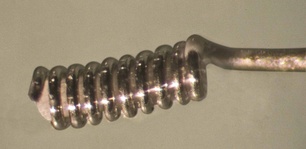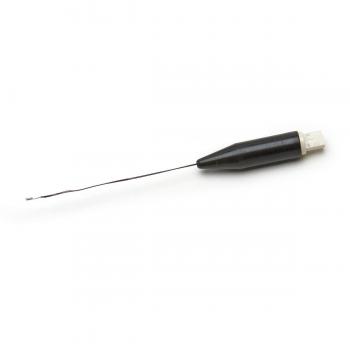IGS100 Implantable Glucose Sensor
The WPI's IGS100 implantable glucose sensor enables long-term glucose measurement in in vivo or in vitro experiments.
- Overview
- Specifications
- Links
Measure glucose in vivo or in vitro over long term.
Key featires
- Implantable sensor for long-term research
- Integrated reference electrode
- For use with Apollo1000, Apollo4000, TBR4100 and TBR1025
- Requires 91580 Microsensor Adapter
- Package of 2
Benefits
- Implantable microsensor
- Biocompatible
- Long term monitoring
Applications
- In vivo long-term monitoring of glucose in tissues or animals
Long-term glucose measurement in vivo is complex and difficult. Prior measurement techniques could only be used for brief studies or, at most, a few days. Using patented technology, WPI introduces a novel type of implantable glucose sensor. Researchers can use this sensor to directly monitor glucose in long-term in vitro or in vivo experiments. The sensor works great with the TBR systems from WPI.

A coil at the sensor's tip contains the cotton plug that has been drenched with enzymes. The coiled tip has a diameter of around 600 μm.
You can also visit site of the manufacturer.


